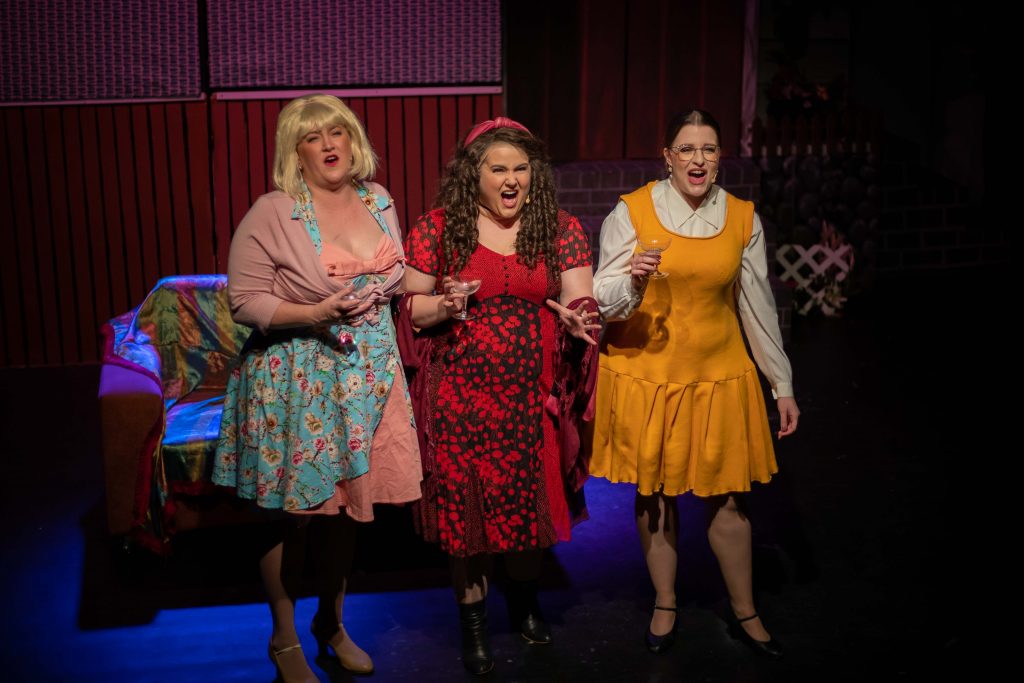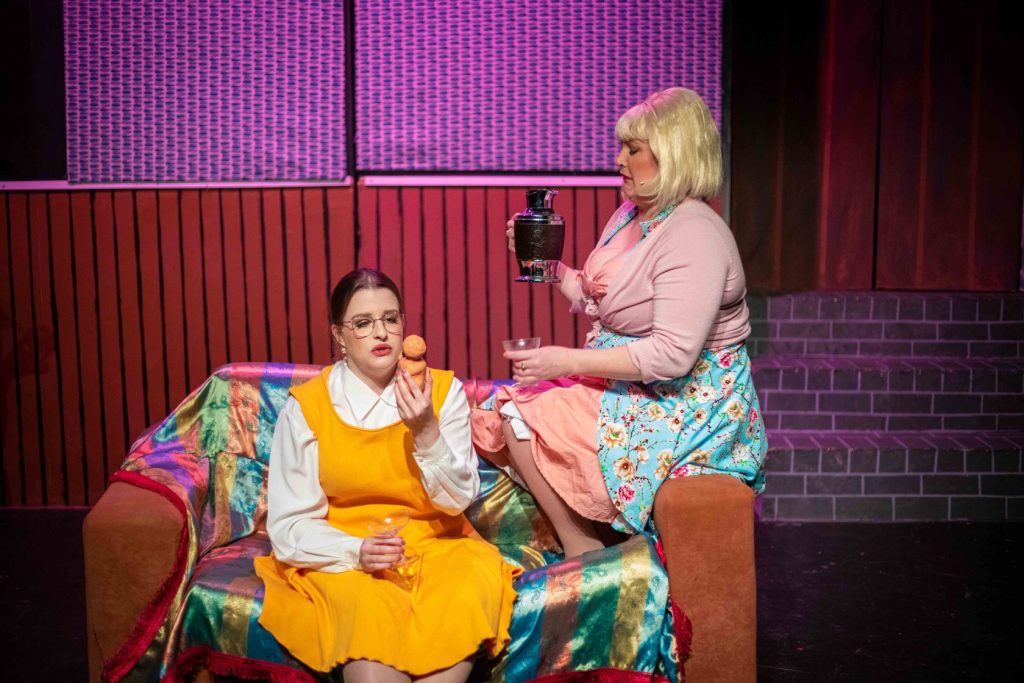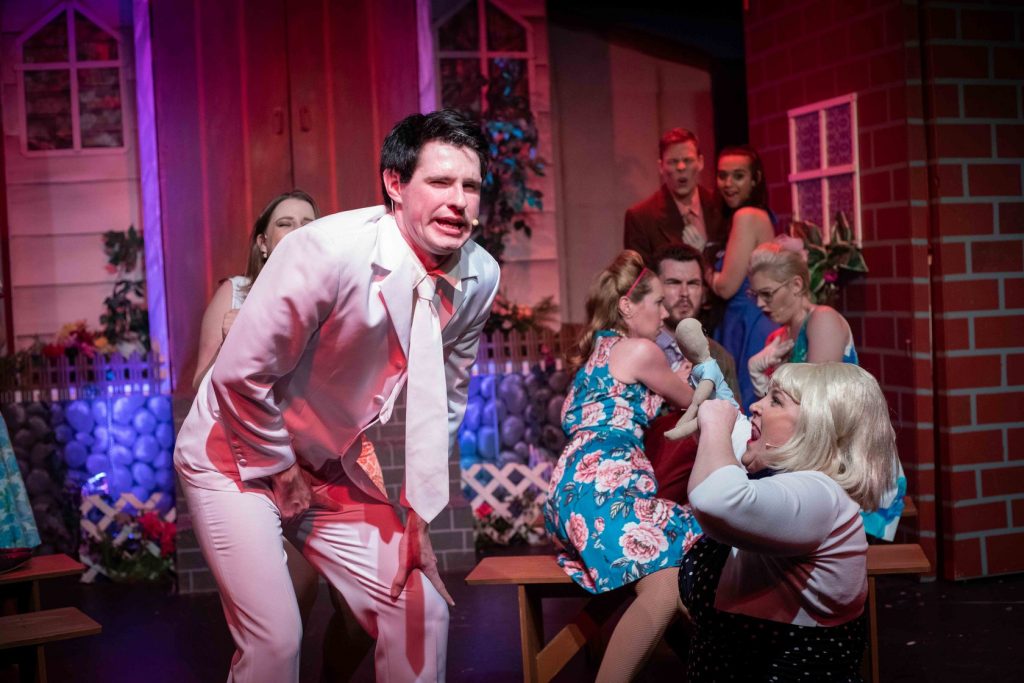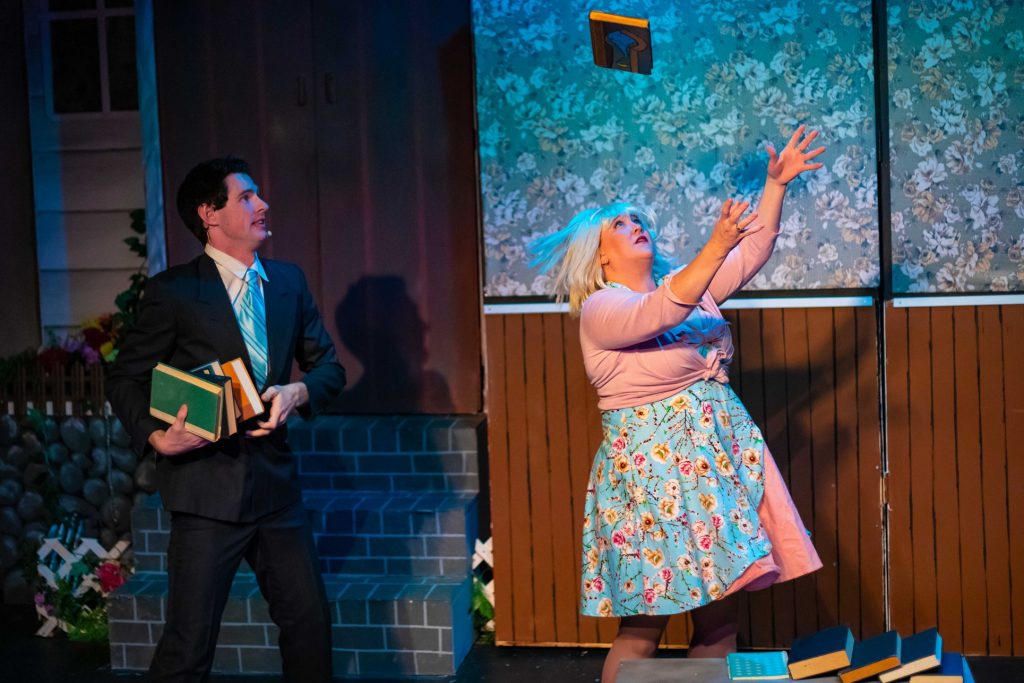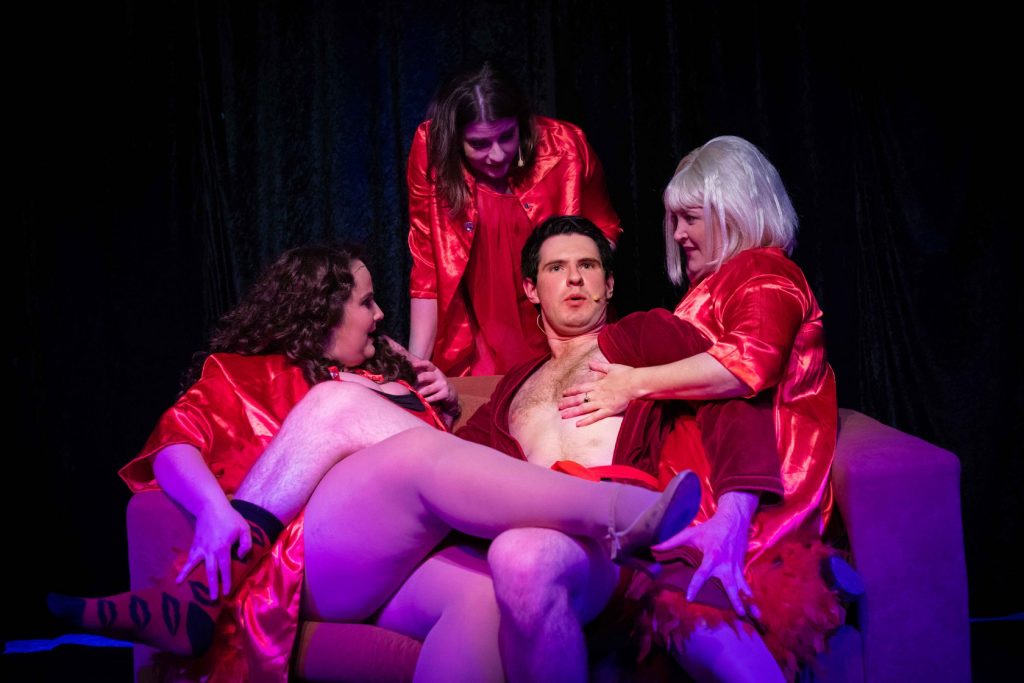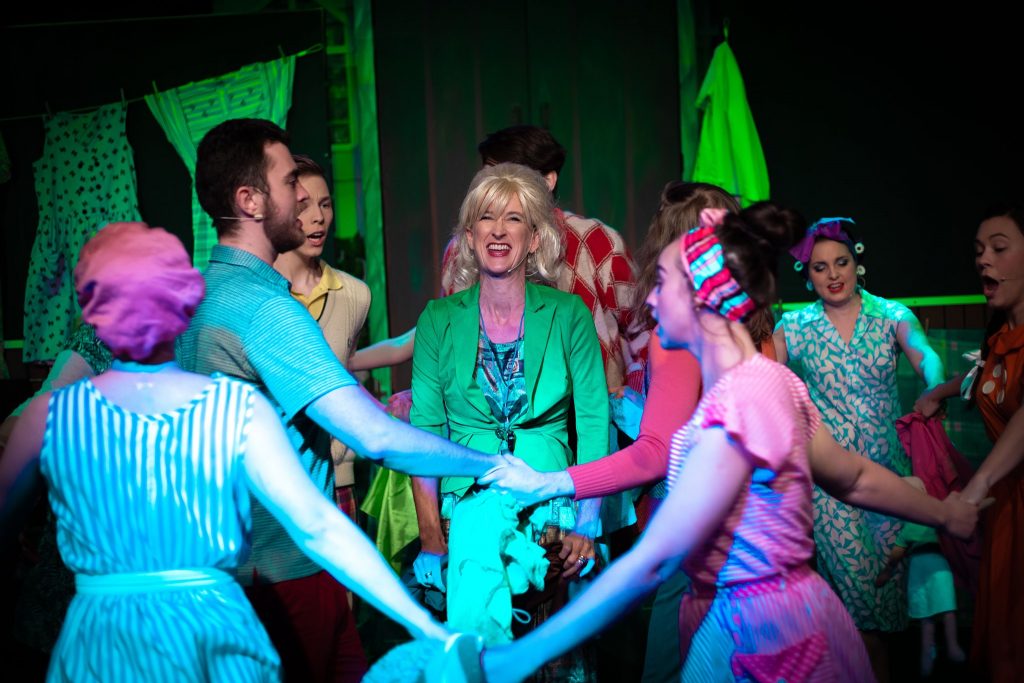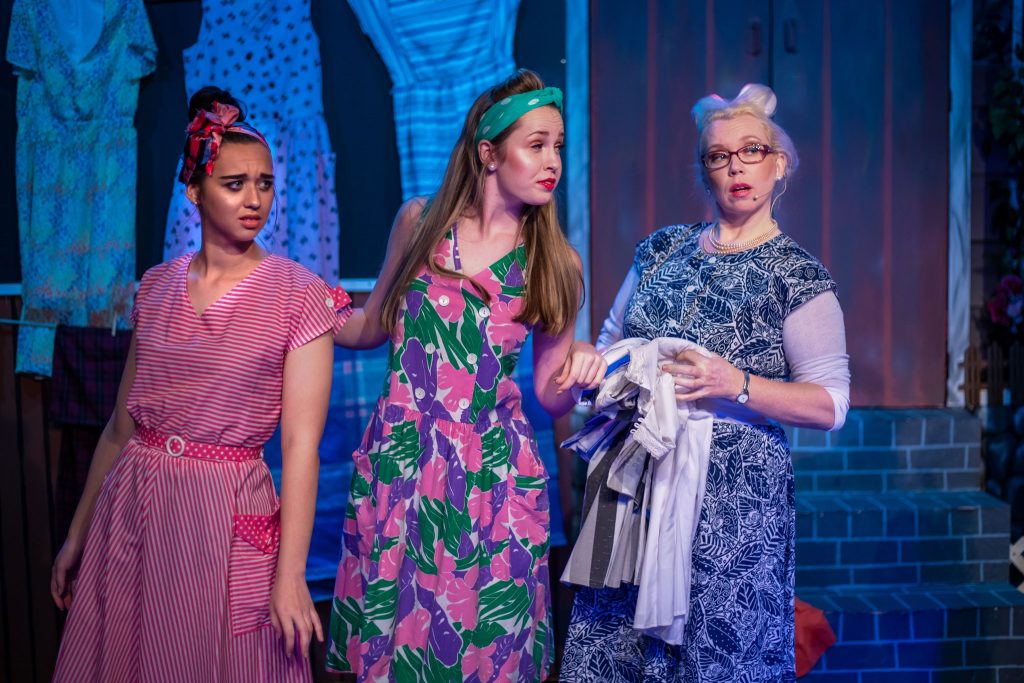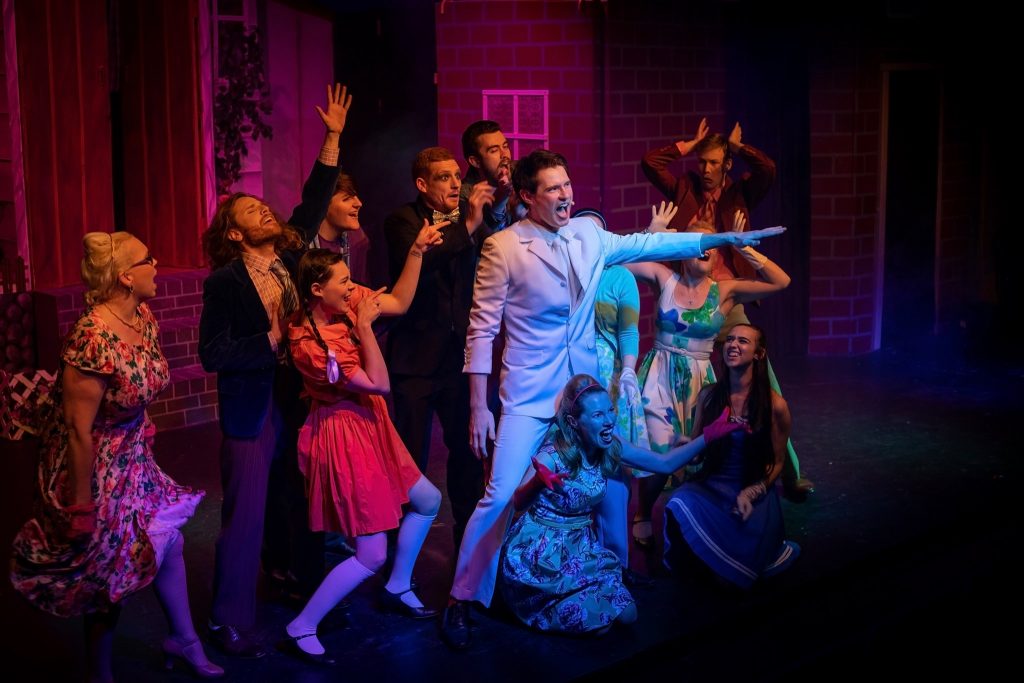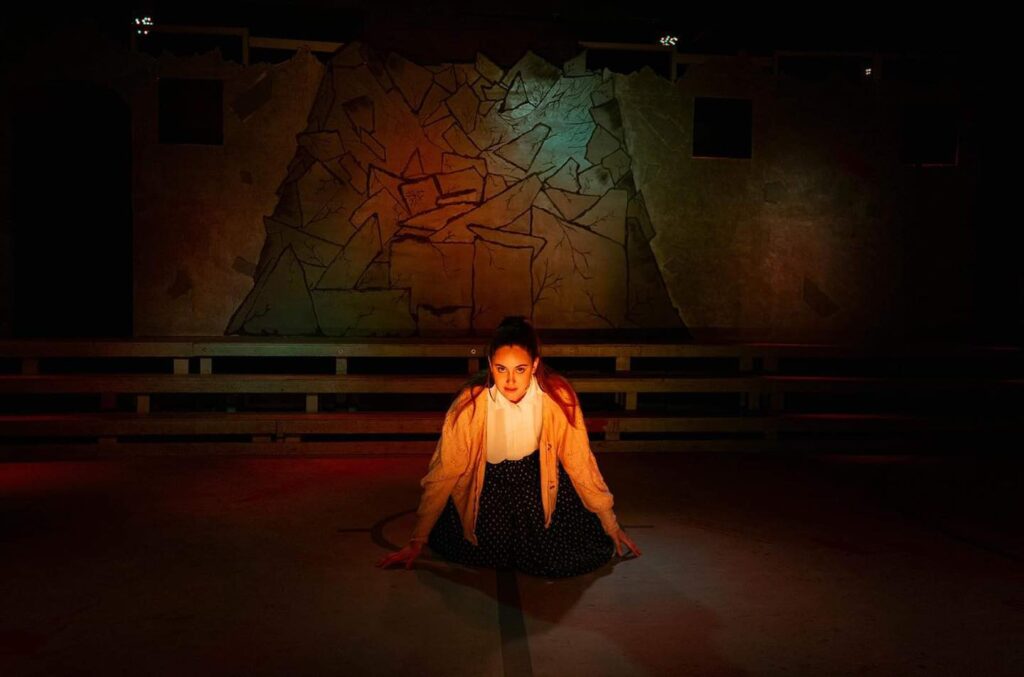
‘The Witches of Eastwick’ // Phoenix Ensemble
‘The Witches of Eastwick’ was devilish.
Phoenix Ensemble has delighted audiences with their devilish and challenging production, ‘The Witches of Eastwick’. Filled with much innuendo and tongue-in-cheek comedy, the production was lewd and a downright spectacle, which tickled the opening night audience.
Based on the novel by John Updike, ‘The Witches of Eastwick’ has been a hotly contested script that either hits or misses its targeted audiences. The show itself, when it first premiered, failed to transfer to Broadway, despite the success of its movie counterpart (which starred Jack Nicholson, Susan Sarandon, Cher and Michelle Pfeiffer). Composed by John Dempsey and Dana P. Rowe, the story jumps between individual character plots and the chaos caused by Satan himself. It’s an absurd storyline that pulls jokes from insinuation and sexualised gags.
In more detail, the plot follows three witches who are frustrated by their mundane lives within the small town of Eastwick. Enter a devil-like man, named Darryl Van Horne, who answers each of their desires, and the women begin to expand their powers. Their new unorthodox lifestyle scandalises the town, and the women begin to see that Darryl’s influences are more corrupting than first imagined.
The tantalising and ridiculous musical comes full circle to deliver a pretty relatable message at the end. Without spoiling anything, the audience learnt that one can conquer their demons by finding the strength within.
Director and Set Designer, Darcy Morris, has crafted the Eastwick world with pop-out rooms and roll-on sets. As the script changes places and houses frequently, Morris divided the small stage into zones as best as one could, to transport the audience to the required lots. From left to right, flats would open to reveal rooms or be boxed off to create a neighbourhood. To balance a more simplistic setting against the detail of the rest of the production, when the curtain was drawn, the audience ventured into of Darryl’s mansion and a lone couch became the focal point of his abode.
While this overall aesthetic of the production innovatively worked in the tight space (a well-known feat for the Tin Shed), there was a roughness to the show where the flow of scenes was not quite polished. For example, set changes were haphazard or weren’t moved into the correct alignment, which caused distraction when the crew tried to fix this during scenes, microphones popped or turned off during songs, tech cues were visibly missed or prompted too early, and the constant opening and closing of the dividing curtain was disrupting.
Additionally, some scene changes made by the stagehands were particularly noticeable, as they were fully lit along with the other actors on stage, obviously moving furniture and set pieces. This may have been an unintentional side effect of Morris’ direction, although it did pull focus in some scenes.
The show features some catchy songs with lyrics you’ll giggle to yourself over, which drives the sometimes lacking book into the next scene. Musical Director Kym Brown kept a tight rein on her band who play in full view and fill the theatre with rousing sounds. The vocal work within the three-part harmony was passionate and spine-tingling. The pace of the musical was in check through Brown’s swift work.
For a script that has an absurd storyline, the cast worked energy and vitality into the production. As the three female protagonists and witches galvanised by Satan’s charm, Samara Marinelli, Lara Boyle and particularly Danika Saal were utterly delightful. As mentioned, the trio performed some incredible harmonisations, which showcased their wonderful vocal ability respectively.
Their stereotypical characters were portrayed with conviction and confidence – Marinelli was strong and tough as divorced mother, Alexandra Spofford, Boyle was uptight and quick-witted as musician Jane Smart, and Saal was scattered and shy as journalist Sukie Rougemont. For Saal, her characters ditzy nature had an overwhelming appeal and provided much of the comic relief – especially during Saal’s professional ability to improvise in scenes when something went askew.
Darryl, made popular in the movie by Jack Nicholson, was brought to life with aplomb by Joshua Moore. With a performance coated in a Jim Carrey zest, Moore was chaotic and charismatic in the leading role. At times, Moore overacted his characterisation, which came off as goofy and we never really saw a sinister evil that one would expect from the Devil. Despite this, his performance worked in his own way and his vocals were also strong.
A large ensemble filled out the many other roles within the production and they played various parts in several dance routines, choreographed by Taylor Davidson. ‘Dirty Laundry’ was a standout number, with sassy townspeople gossiping about people’s private business. Lauren Ryan, Emma Venzke, Scott Johnson and Maggie Schafer made a meal out of their nosey characters and looked joyous dancing on stage. Another highlight was the sexualised anarchy during ‘Dance with the Devil’, which further proved why this musical is not suitable for children.
‘The Witches of Eastwick’ is a cleverly devised musical that sheds inhibition and liberates with adolescent energy. It’s raunchy, over-sexualised and a monster of a show to fit in a small space. While some themes can be quite confronting, especially playing to audiences only a step away, Phoenix Ensemble has again taken another risk with an interesting show.
‘The Witches of Eastwick’ performs until Saturday, 17 August 2019. For tickets visit, Phoenix Ensemble Website – The Witches of Eastwick.
Disclaimer: Cast / Production Members working on this show have also worked for Theatre Haus, but rest assured, we always take steps to ensure our reviews maintain their integrity and are free from bias.




